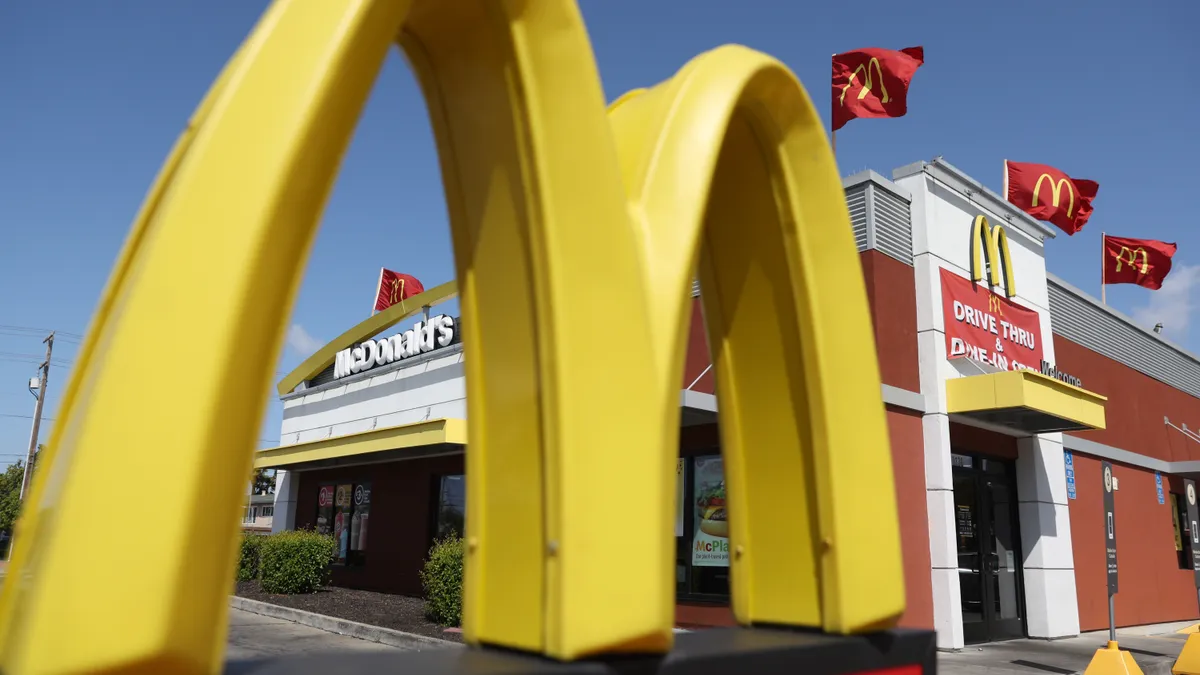Dive Brief:
- A former McDonald’s night manager has alleged the company fails to provide employees who are nursing with reasonable break time and a proper space to express milk. The claims were made in a proposed collective action against the fast-food giant’s U.S. subsidiary and several of its franchises.
- Per the Feb. 14 complaint in Faber v. McDonald’s U.S.A., LLC, the manager started working at a Kansas McDonald’s about four months after giving birth. During her five months there, she rarely had enough break time to pump, and for roughly half her shifts, she had no break at all, the lawsuit alleged. She was also allegedly forced to pump in the corner of a stockroom to avoid security cameras or in the bathroom when she worked with male employees, according to court documents.
- Additionally, a McDonald’s employee in New York was allegedly forced to pump in a back office without a door, allowing co-workers to enter every time she pumped, the complaint said. McDonald’s actions allegedly violated the Fair Labor Standards Act, as amended by the Providing Urgent Maternal Protections for Nursing Mothers Act (the “PUMP” Act) by failing to provide nursing mothers reasonable break time and “a place, other than a bathroom, that is shielded from view and free from intrusions from coworkers and the public” to express milk.
Dive Insight:
Since 2010, employers covered by the FLSA have been required to provide certain lactation accommodations for nursing mothers so they can express milk at work. The accommodations are required for up to a year after the child’s birth.
In 2022, Congress passed the PUMP Act in response to the 2010 provision’s limited coverage and remedies. Now, all employers subject to the FLSA are required to accommodate nursing employees, and nearly all FLSA-covered employees have the right to take needed time and to access an appropriate private space to express milk, the U.S. Department of Labor has emphasized in an FAQ document.
The accommodations involve two basic requirements: Reasonable time as needed to express milk; and a space — not a bathroom — shielded from view (including from security cameras), functional for expressing milk and which can’t be intruded upon by co-workers and the public, according to a DOL guidance.
The frequency of breaks, as well as their duration, may vary, the guidance points out. For example, a shift manager at a fast-food restaurant may need four, 25-minute pump breaks each day when she first returns to work after the birth of her child, while a department store delivery driver with a nine-month-old baby may need two 30-minute pump breaks each day, the DOL explains.
If an employer doesn’t have a private space available, as the McDonald’s supervisors allegedly told the plaintiffs, it may have to create one, such as by temporarily designating an enclosed, lockable office as a place to express milk, the DOL guidance suggests. Another option is to offer portable lactation pods, akin to portable toilets, that often have a sink and a refrigerator.
Lactation spaces must also be comfortable and sanitary. In July 2023, three U.S. Postal Service employees filed a collective action against the agency for failing to provide them with such spaces. According to the complaint, one employee allegedly had to pump milk in a cramped, hot, unlit space at the back of her mail truck. That litigation is ongoing. In September, two former Dollar General workers filed a similar lawsuit alleging they had to pump milk in unsanitary, unlocked stockrooms and restrooms; they voluntarily dismissed the case a few months later.
Break time to express milk may be unpaid — so long as the nursing employee is completely relieved of duty. If not, the employer must count the time the employee spent pumping as hours worked for purposes of minimum wage and overtime requirements, DOL has cautioned.
The McDonald’s lawsuit raises another timely issue: when franchises may be liable for violating the FLSA as joint employers. The FLSA doesn’t define “joint employer” or “joint employment,” according to government documents. But it does define “employer” to include “any person acting directly or indirectly in the interest of an employer in relation to an employee.”
In 2021, DOL rescinded a Trump-era joint employer rule focusing on whether the purported joint employer actually exercised control over the other entity’s employees, seeming to limit when an organization could be considered a joint employer, according to a 2021 Paul Weiss law firm post. The DOL has yet to propose a replacement rule; Acting Secretary of Labor Julie Su recently indicated to a congressional committee that a new standard wasn’t on DOL’s agenda.
However, effective Feb. 26, employers will be subject to a new joint employer rule under the National Labor Relations Act, which affords most private sector employees certain rights to engage in concerted action to improve their wages and working conditions, with or without a union, according to the National Labor Relations Board.
The new NLRA rule specifies that an entity may be considered a joint employer of another entity’s employees if the two share or co-determine essential terms and conditions of employment.











